To many parents, Montessori may sound like a cult or a religious movement, given that it is named after the woman who pioneered this philosophy. Others associate it with anti-authoritarian education. Both impressions, however, are misconceptions. Montessori education is the most recognized and arguably the most widely practiced form of alternative education globally. It was a revolutionary approach in its inception, and it remains highly relevant today, nurturing children to become independent, self-confident, and capable individuals. Moreover, it cultivates their attentiveness and respect for others. Montessori education helps children mature internally and grow into self-sufficient adults at peace with themselves and their environment. This article will illuminate the Montessori methods, the materials involved, and their positive effects on child development.
Maria Montessori's Vision of the Child
Imagine if Mozart had attended a daycare or a school and his musical genius went unnoticed, stifled by a rigid, standardized educational system. Karin Ann, a Montessori institution founder based in Hong Kong, echoes the sentiment that Maria Montessori championed over 70 years ago: One size doesn't fit all. Education, like services, should be customized. This is crucial as scientific research substantiates that a child's early learning experiences can significantly and enduringly impact their development and perception of learning.
The education systems in most developed countries are not only standardized - requiring all children to learn the same material at the same time - but they are also compulsory. However, Maria Montessori observed in the early twentieth century that children naturally possess an inner drive to discover and learn, even to perfect skills. Remarkably, children can independently manage this process without direct instruction. The prime example: young children learning a language, be it German, English, Mandarin, or Kiswahili. This is an achievement adults struggle with due to the complex structures of languages. Yet, a child learns a language effortlessly, simply by being exposed to it during the appropriate stage of development, typically through communication with caregivers.
She envisioned the child as a "self-builder", intuitively discerning what's necessary for their personal development. The adult's role is to attentively observe the child to understand their stage of development and their needs, and then provide opportunities for them to advance. Intrinsic learning - learning motivated from within - is inherent in children from the very start and can only be extinguished if it's not nurtured correctly.
This concept of a self-builder or wise explorer within our child initially challenges us adults. We often tend to overprotect our children - driving them to school to ensure their safety, preparing their lunches to make sure they eat, or dressing them because they haven't yet mastered the skill. Children, however, are far more capable than we often acknowledge. They learn complex tasks, such as walking, without direct instruction. This implies that we may undermine our children's abilities by not providing them with opportunities to exercise their independence. Are we inadvertently sabotaging their development to become confident, independent adults who can navigate the world proficiently?
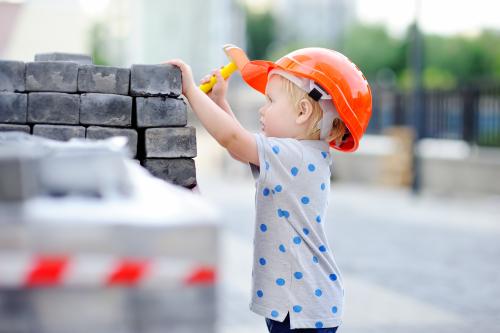
This idea of the little master builder that is in our daughter, or of the wise explorer that is our son, initially resists us adults. We take them to school by car so that nothing happens to them on the way to school, we make them sandwiches so that they have something to eat, we put a jacket on them because they can't do it themselves yet - and because that's what you do with children. They are still small, after all.
And now a surprise: children can do much more than we give them credit for. They even learn to walk all by themselves, even though this is a highly complex process that takes place in the brain - as discovered, for example, by stroke patients who have to relearn how to walk.
First and foremost, it's about not having confidence in our children's abilities and not giving them the chance to exercise their master builder skills on themselves. For fear of ... yes, of what, actually? That they will become independent and no longer need us? But isn't that the point of parenting - that children become confident, independent adults who can navigate the world well? Aren't we sabotaging this idea by taking everything away from them? Are even perhaps patronizing them without meaning any harm?
In traditional pedagogy, developmental objectives are set and children are guided towards them. Maria Montessori's approach, rooted in her medical background, was distinctively different: diagnosis preceded education. The appropriate educational content and methods are determined based on the child's unique talents and weaknesses. If each child is approached individually, they can optimally develop their potential. However, this approach necessitates educators who respond to the children's needs. Unfortunately, most public schools lack the resources for such an individualized approach. Additionally, personal development and individuality are often discouraged in these institutions.
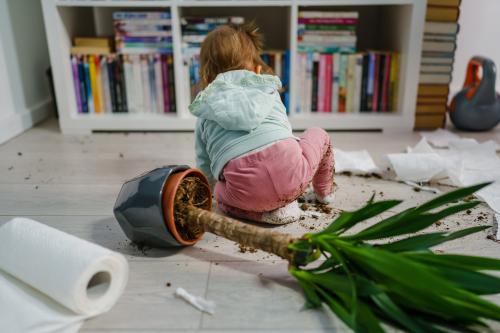
So, how do we allow our children to develop freely? By letting them do as they please? Absolutely not. The misconception that Montessori education is anti-authoritarian is far from the truth. Some critics consider it too rigid. Neither of these views is accurate, as we'll discuss later. Maria Montessori advocated for a "prepared environment" where children could have learning experiences that fulfill their innate desire to learn. Within this learning environment, all elements should be designed to positively impact the child. Thus, a child can educate themselves, guided by an intrinsic impulse, without adult interference. Adults offer help only when the child can't make progress independently. Montessori children are not educated abstractly; they learn in relation to reality, exploring and mastering it with all their senses. Consequently, Montessori learning environments prepare children for real life.
To facilitate these discoveries, Maria Montessori developed a range of learning materials, which will be described in detail in a later section. Using these resources, children gradually attain a higher level of independence, a development that continues into adulthood.
Besides the prepared environment, Maria Montessori emphasized viewing the child as a cohesive entity, a combination of body, mind, and spirit, and not an empty vessel to be filled. She showed respect and attention to the children, considering them as individuals, not incomplete adults. This respect was reciprocated naturally by the children, who felt acknowledged and content.
Who was Maria Montessori?
Maria Montessori was a groundbreaking figure, having a modern perspective on children for her time. She was so influential that she is considered one of the classics in education (she was even so famous that her portrait graced the Italian 1000 lira bill).

If it had been up to Maria Montessori's father, she would have become a teacher, if she had a profession at all as a woman. It was due to her mother's support, an educated, politically progressive, and liberal woman, that Maria could defy traditional gender roles and realize her professional ambitions. Montessori was the first woman in Italy to study medicine and the only female student in her course. She was largely self-supporting during her studies, an aspect that later resonated in Montessori education for older children.
Her groundbreaking doctoral dissertation in medicine and surgery made her the first female doctor in Italy. Montessori specialized in pediatrics, but her intellectual curiosity didn't stop there. She delved into developmental psychology and psychiatry as well.
Normalization of the Child
Initially, she worked with intellectually disabled children and found that many, with proper support, performed just as well on first-grade exams as their non-disabled peers. This revelation led her to the conclusion that all children could benefit from such support. She formulated a pedagogical concept that she was soon able to test on non-disabled children in a disadvantaged neighborhood of Rome in 1907. These neglected children caused damage to buildings and roamed aimlessly. The local building society decided to set up a room for these children and invited Maria Montessori to supervise them.
She was able to apply her experiences from working with intellectually disabled children and her scientific knowledge to these non-disabled children with overwhelming success. Initially uninterested, moody, shy, or rowdy, these children gradually developed an interest in Montessori's specially designed materials. They engaged with tasks until completion, chose their tasks, and learned to concentrate on single activities. They showed more interest in learning materials than conventional toys and learned to read and write. Over time, they became cheerful, self-confident, and sociable, displaying kindness and consideration to each other.
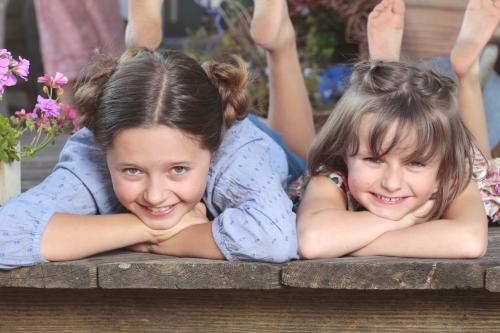
Maria Montessori referred to this transformation as the "normalization" of the child. While the term might seem antiquated and inappropriate today, Montessori used it to describe children who are confident, cheerful, active, and self-reliant. This transformation is a result of the calm and focused work environment in Montessori learning spaces.
The children in her first institution were responsible for maintaining the space. They kept it clean, washed their dishes, cared for small animals and plants. The furniture was designed for their size: small, light tables and chairs that they could easily move.
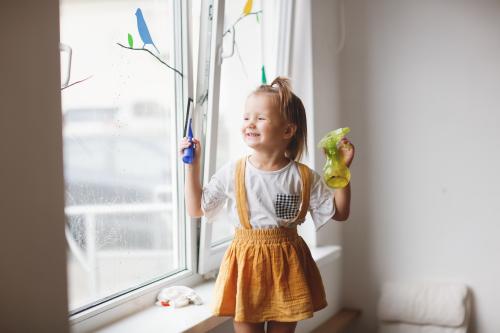
The children in this institution thrived so significantly that "children's houses" soon sprung up across Rome, even catering to children from higher social classes.
Montessori Goes Global
News of the remarkable success of Montessori 'Children's Houses' rapidly spread beyond Italy, piquing international interest. The Montessori movement began attracting advocates worldwide, including luminaries such as Sigmund Freud. Maria Montessori initiated training programs for aspiring Montessori educators from across the globe. Her approach took root in places as far-flung as Saint Petersburg, where a Montessori class was established. The method found enthusiastic adopters in England and the Netherlands. In the Netherlands, in particular, comprehensive schools incorporating Montessori principles and housing both Children's Houses and six-year elementary schools were established. The first Montessori Lyceum in Amsterdam, intended for students aged 12 and above, was even founded and continues to operate today. Today, the Netherlands has the highest concentration of Montessori schools worldwide, with the approach being integrated into the national education system.
Montessori's concepts and publications also found considerable favor in the United States, where several schools were established. It was also in the US that the first significant conflicts emerged. Helen Pankhurst, who headed the American Montessori institutions, desired to offer training courses herself, which Maria Montessori disallowed. In response, Pankhurst developed her alternative concept, the Dalton Plan, which enjoyed its own measure of success.
Maria Montessori was adamant that all authorized Montessori institutions globally adhere to her established principles. Her efforts ensured a consistency in Montessori establishments, from Shanghai to New York to Munich, that endures to this day. The Association Montessori Internationale (AMI) was instituted to uphold these educational principles and the use of Montessori learning materials globally.
Throughout her life, Maria Montessori vigorously defended her system against dilution, even clashing with proponents within her ranks. She reproached Dorothy Canfield-Fisher for her interpretation of Montessori principles in her book "A Montessori Mother". There were also conflicts with Vienna-based Elise Herbatschek, who had developed a music curriculum in the Montessori spirit. Montessori disapproved of deviations or reinterpretations of her established principles, even as she championed freedom and independence for children.
An educational method needs to evolve and adapt to changing circumstances to thrive. As Montessori refused to allow her principles to be interpreted and modified, her pedagogical approach grew insular and has since remained largely unchanged.
Montessori's progressive ideas, while spreading internationally, began to lose favor in her home country, possibly due to her controversial cooperation with Mussolini. The motivations for this alliance remain unclear and raise questions, given Montessori's mission of cultivating independent, confident children, a goal at odds with fascist ideology. By 1934, all Montessori schools in Italy were shut down. In Germany, Montessori's education was prohibited at the onset of the Nazi regime, and her books were publicly burned, citing their promotion of individuality as incompatible with the national community.
In Germany, too, Montessori education was banned at the very beginning of the National Socialists' reign, and their books were burned - on the grounds that the individualization propagated in them stood in the way of the national community.
Maria Montessori visited India, where many schools had already adopted her model, thanks to Indian women trained under her guidance. She stayed there for several years, further refining her educational approach by incorporating religious and mystical elements.
Critics have accused Montessori education of incorporating spiritual elements. Terms like "cosmic education" and "plan of the child on Earth" may reinforce this perception. However, it should be noted that Maria Montessori was a scientist, and her methods were grounded in empirical research. She believed science and spirituality could coexist and was always guided by intuition in her scientific work and career.
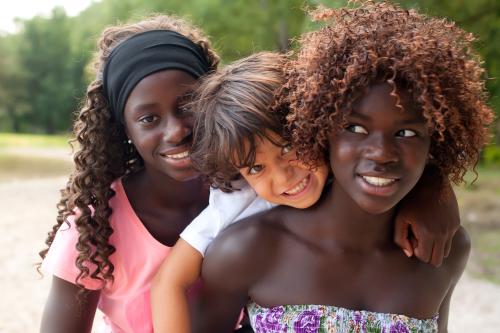
Montessori's mission was to benefit all children, irrespective of their religion, skin color, or ethnicity. That's why Montessori is not a trademark; the method should be accessible to all. She viewed children and their environment as a single, interconnected organism. These thoughts inspired her "cosmic education" concept, also influenced by her mother's uncle, a distinguished geologist.
Beyond her contributions to developmental psychology and education, Maria Montessori was a visionary. She advocated for a peaceful world, earning her three nominations for the Nobel Peace Prize. Montessori saw every child as an opportunity to foster a more peaceful world, asserting that conflicts stem from early childhood when children struggle against their parents for autonomy. She argued that children who were not permitted to become self-sufficient would seek guidance and leadership, even into adulthood.
Montessori Institutions Today
Montessori institutions today are as relevant as ever, with approximately 22,000 Montessori facilities worldwide. Moreover, numerous facilities integrate elements of the Montessori approach into their curriculum. This is because many of Montessori's ideas have become education standards, such as child-sized furniture and educational toys. The materials developed by Maria Montessori remain unmatched in quality to this day.
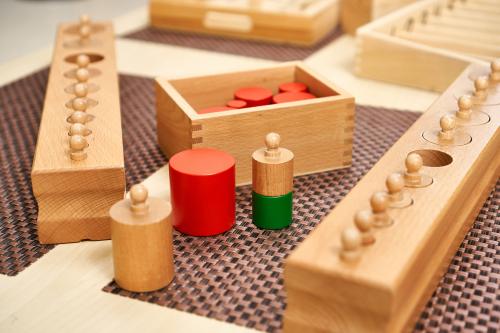
Presently, the Montessori method is experiencing a renaissance, appealing to parents dissatisfied with the traditional education system and seeking alternatives. A child's Montessori journey can begin as early as in a Montessori nursery, which accepts children up to age 3. The Montessori Children's House welcomes children from ages 3 to 6, providing an environment for individual or group learning, task mastery, and social skills practice. A Montessori elementary school serves children aged 6 to 12, which, according to Montessori, aligns with natural child development, contrary to the conventional four-year elementary school system in Germany. Adolescents between 12 and 18 continue their development in Montessori secondary education. There are several Montessori high schools and secondary schools in Germany; however, Children's Houses and elementary schools remain the most common. This might be due to the limitations of Montessori pedagogy in accommodating increasingly abstract content at higher educational levels.
The majority of existing Montessori schools are private due to the cost of high-quality learning materials and creating a child-centric environment. Public funding often falls short in equipping state schools with such materials. Despite this, Montessori methods are forward-thinking, even if they would need to be adapted to modern conditions.
For example, Katy Wright, a Montessori educator at a public school, in her presentation, describes how her three-year-old son not only learned to concentrate at a Montessori facility but also developed leadership skills. He improved his working memory, learned mental flexibility, and honed self-control. She firmly believes that the Montessori approach could address many of the issues in the public school sector.
This improvement is achieved by attentive observation of the child's development and providing guidance accordingly. By creating a comfortable learning environment that motivates discovery and development, children are equipped to become independent and responsible members of society.
There are many misconceptions associated with Montessori education. Merriam Webster, a renowned American dictionary, describes the method as "... a system for training young children emphasizing free physical activity", while the American Heritage Dictionary refers to it as "practical play". While physical activity and practical exercises are crucial components of Montessori pedagogy, reducing it to only these aspects provides an incomplete picture. Now, let's delve deeper into the essence of the Montessori method.
The Developmental Phases of a Child
Children learn at an astonishingly rapid pace, especially when the material aligns with their developmental stage. Every child progresses through identifiable phases, during which they are particularly responsive to specific learning stimuli. In these stages, children display heightened interest in particular areas and effortlessly assimilate relevant knowledge through intense engagement. Unlike adults, who aim to accomplish tasks as efficiently and quickly as possible, children revel in repeating an activity. For instance, a child may clean a window repeatedly, long after it's already spotless, purely for the joy of the movement. The child ceases this activity only once it's fully savored.
These phases occur at specific intervals in a child's life and continue until the child has mastered the knowledge in question. Subsequently, the window of opportunity closes, and the child moves onto another learning subject. Maria Montessori recognized this pattern, noting that these phases occasionally overlap and once a phase has concluded, the window of heightened intrinsic motivation closes irretrievably.
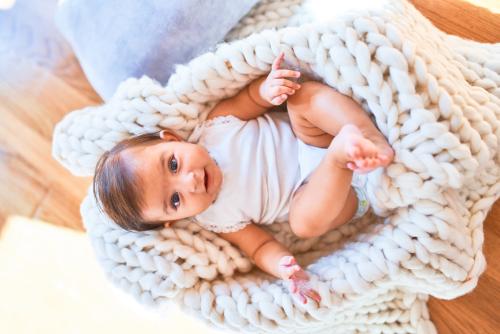
While it's theoretically possible for a child to learn an activity after a so-called sensitive phase has passed, doing so can be notably more challenging and potentially lead to frustration. For example, a young child naturally picks up a complex language, while an older child already requires a learning method and a teacher. Certain skills cannot be learned later. Take the formation of glottal stops used by some African tribes or the ability to differentiate subtle shades of white as the Inuit can. Even learning to ride a bicycle can be challenging if missed during the appropriate phase. Furthermore, skills acquired early usually persist for a lifetime.
Often, a child no longer sees the need to learn something once the corresponding sensitive phase has passed, or they may lose interest. Consequently, it's crucial that educators recognize these phases, observe the children within these contexts, and provide appropriate guidance.
Maria Montessori's observations of these sensitive phases in children have been broadly affirmed by science, especially by psychologist Jean Piaget. All children undergo the same phases. For instance, all children learn to walk around the age of one. This observation aligns with phase divisions used in developmental psychology.
Certain activities or objects may captivate children at specific developmental stages but leave adults indifferent. A three-year-old may be fascinated with Montessori's famous Pink Tower, but adults may not share this enthusiasm. Similarly, walking along a line, often practiced in Montessori nurseries, may seem mundane to adults but is precisely what children of certain ages need. A two-year-old, however, might lack interest in these activities, preferring simpler tasks, like clanging two pot lids together, discovering cause and effect.
The natural maturation processes of a child and their development are intertwined, and the learning process can be positively influenced. Primarily, this involves allowing the child to develop and learn naturally, merely offering support and guidance. If this approach isn't employed, the child's needs may go unmet, resulting in defiant reactions, development of fear, or even crying. These reactions are often dismissed as tantrums, but according to Montessori, they are alarm signals indicating the emotional needs of a child haven't been met.

Parents considering enrolling their child in a Montessori nursery often fear that their child may develop one-sided interests. However, Montessori educators report that such instances are infrequent. The sensitive phases help ensure that children's activities remain balanced.
If a child is completely uninterested in a topic that would actually correspond to its stage of development, the task of parents and educators is to remain patient and to trust that the interest will sooner or later still be awakened - with some children it just takes a little longer. An educator can try to gently steer the child in this direction by directing the child's attention to just that object and the appropriate learning material. But at the latest, when a good friend of the child has a skill that the child still lacks, it develops the ambition to learn it as well.
Maria Montessori initially developed her method for children aged three to six. Observing the positive development of these children, she expanded the method to encompass infants and older children. Consequently, she distinguished three sensitive phases: ages 0 to 6 (with subdivisions from 0 to 3 and 3 to 6), ages 6 to 12, and ages 12 to 18.
Montessori characterized the child's journey to adulthood as consisting of four stages. She identified the stages from 0 to 6 years and 12 to 18 years as formative, during which significant development occurs. Conversely, she deemed the stages from 6 to 12 years and 18 to 24 years as stable.
Montessori suggested that development occurs in spurts. This perspective contrasts with traditional school systems, where requirements increase linearly—a mismatch with the natural development of a child. For a child's development to be supported continuously within an educational institution, Maria Montessori advocated for the integration of daycare and school institutions.
Children aged 0 to 6
In the critical first six years of a person's life, parents should encourage their children to actively participate in life, taking them along for shopping, to the market, perhaps even to work, so they can gather varied impressions—rather than confining them to a playpen or nursery.
First subphase: 0 to 3 years
From birth to age three, a period Montessori dubbed the "absorbent mind" dominates. While a child is physically a living being at birth, its mental state is akin to a fetus. The child is bombarded by numerous impressions, both positive and negative, from its surroundings: sounds, smells, and even subconsciously perceived moods. Like a sponge, the child absorbs and stores these in its unconscious memory, developing behaviors unconsciously and being particularly malleable during this time. Particularly in the first year, the foundations for later life are laid. The child learns to adapt to its surroundings and then gradually constructs its personality.
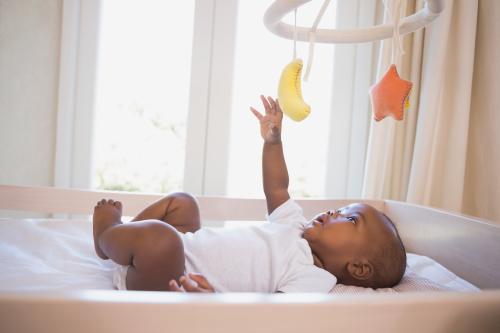
Everything the child experiences during this time is absorbed unfiltered, including negative experiences. These experiences can impact the child's basic trust, potentially causing struggles later in life.
In the next part we will delve deeper into the fascinating world of Montessori by exploring the sensitive phases..
All sources will be cited at the end of Part 3.
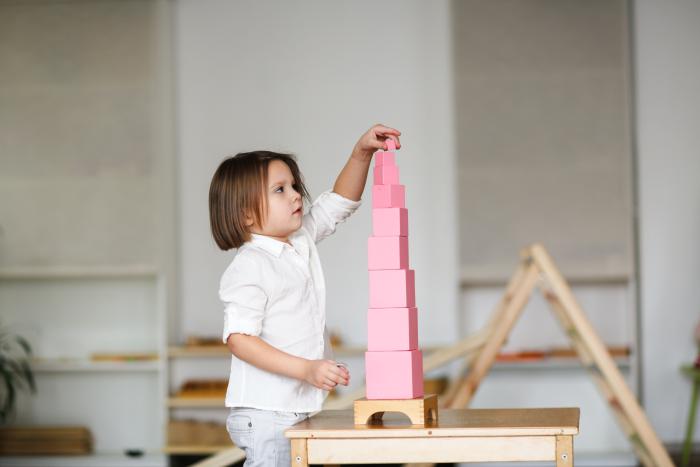
Comments